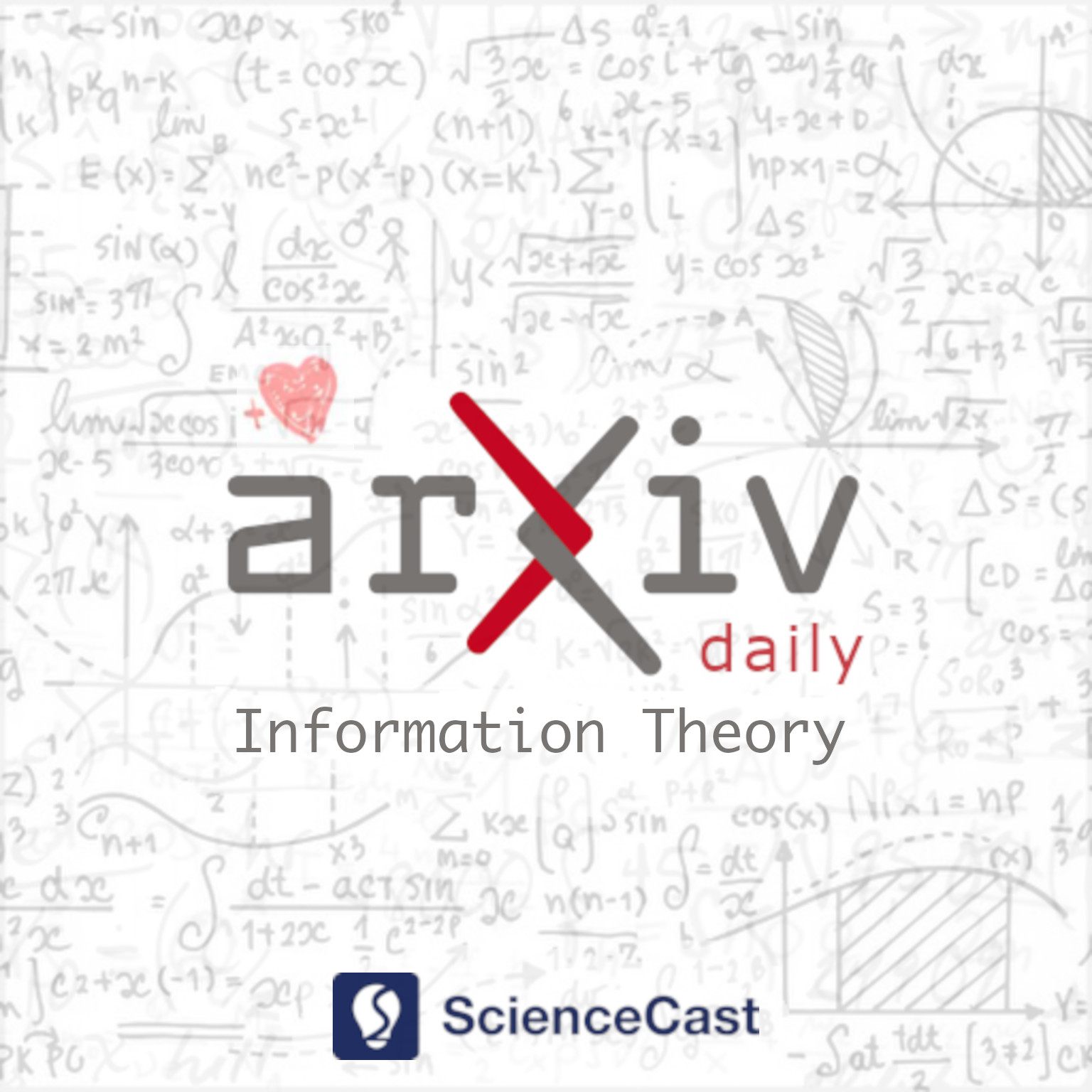
Information Theory (cs.IT)
Fri, 30 Jun 2023
1.Self-Connected Spatially Coupled LDPC Codes with Improved Termination
Authors:Yihuan Liao, Min Qiu, Jinhong Yuan
Abstract: This paper investigates the design of self-connected spatially coupled low-density parity-check (SC-LDPC) codes. First, a termination method is proposed to reduce rate loss. Particularly, a single-side open SC-LDPC ensemble is introduced, which halves the rate loss of a conventional terminated SC-LDPC by reducing the number of check nodes. We further propose a self-connection method that allows reliable information to propagate from several directions to improve the decoding threshold. We demonstrate that the proposed ensembles not only achieve a better trade-off between rate loss and gap to capacity than several existing protograph SC-LDPC codes with short chain lengths but also exhibit threshold saturation behavior. Finite blocklength error performance is provided to exemplify the superiority of the proposed codes over conventional protograph SC-LDPC codes.
2.Performance Analysis for Polar Codes under Successive Cancellation List Decoding with Fixed List Size
Authors:Jinnan Piao, Dong Li, Xueting Yu, Zhibo Li, Ming Yang, Jindi Liu, Peng Zeng
Abstract: In this paper, we first indicate that the block error event of polar codes under successive cancellation list (SCL) decoding is composed of path loss (PL) error event and path selection (PS) error event, where the PL error event is that correct codeword is lost during the SCL decoding and the PS error event is that correct codeword is reserved in the decoded list but not selected as the decoded codeword. Then, we simplify the PL error event by assuming the all-zero codeword is transmitted and derive the probability lower bound via the joint probability density of the log-likelihood ratios of information bits. Meanwhile, the union bound calculated by the minimum weight distribution is used to evaluate the probability of the PS error event. With the performance analysis, we design a greedy bit-swapping (BS) algorithm to construct polar codes by gradually swapping information bit and frozen bit to reduce the performance lower bound of SCL decoding. The simulation results show that the BLER performance of SCL decoding is close to the lower bound in the medium to high signal-to-noise ratio region and we can optimize the lower bound to improve the BLER performance of SCL decoding by the BS algorithm.
3.Weighted Sum Rate Enhancement by Using Dual-Side IOS-Assisted Full-Duplex for Multi-User MIMO Systems
Authors:Sisai Fang, Gaojie Chen, Chong Huang, Yue Gao, Yonghui Li, Kai-Kit Wong, Jonathon A. Chambers
Abstract: This paper established a novel multi-input multi-output (MIMO) communication network, in the presence of full-duplex (FD) transmitters and receivers with the assistance of dual-side intelligent omni surface. Compared with the traditional IOS, the dual-side IOS allows signals from both sides to reflect and refract simultaneously, which further exploits the potential of metasurfaces to avoid frequency dependence, and size, weight, and power (SWaP) limitations. By considering both the downlink and uplink transmissions, we aim to maximize the weighted sum rate, subject to the transmit power constraints of the transmitter and the users and the dual-side reflecting and refracting phase shifts constraints. However, the formulated sum rate maximization problem is not convex, hence we exploit the weighted minimum mean square error (WMMSE) approach, and tackle the original problem iteratively by solving two sub-problems. For the beamforming matrices optimizations of the downlink and uplink, we resort to the Lagrangian dual method combined with a bisection search to obtain the results. Furthermore, we resort to the quadratically constrained quadratic programming (QCQP) method to optimize the reflecting and refracting phase shifts of both sides of the IOS. In addition, we introduce the case without a dual-side IOS for comparison. Simulation results validate the efficacy of the proposed algorithm and demonstrate the superiority of the dual-side IOS.
4.A Simple Proof for Efficient Federated Low Rank Matrix Recovery from column-wise Linear Projections
Authors:Namrata Vaswani
Abstract: This note provides a significantly simpler and shorter proof of our sample complexity guarantee for solving the low rank column-wise compressive sensing (LRCS) problem using the Alternating Gradient Descent (GD) and Minimization (AltGDmin) algorithm. AltGDmin was developed and analyzed for solving LRCS in our recent work. We also provide an improved guarantee.
5.On the Limits of Single Anchor Localization: Near-Field vs Far-Field
Authors:Don-Roberts Emenonye, Harpreet S. Dhillon, R. Michael Buehrer
Abstract: It is well known that a single anchor can be used to determine the position and orientation of an agent communicating with it. However, it is not clear what information about the anchor or the agent is necessary to perform this localization, especially when the agent is in the near-field of the anchor. Hence, in this paper, to investigate the limits of localizing an agent with some uncertainty in the anchor location, we consider a wireless link consisting of source and destination nodes. More specifically, we present a Fisher information theoretical investigation of the possibility of estimating different combinations of the source and destination's position and orientation from the signal received at the destination. To present a comprehensive study, we perform this Fisher information theoretic investigation under both the near and far field propagation models. One of the key insights is that while the source or destination's $3$D orientation can be jointly estimated with the source or destination's $3$D position in the near-field propagation regime, only the source or destination's $2$D orientation can be jointly estimated with the source or destination's $2$D position in the far-field propagation regime. Also, a simulation of the FIM indicates that in the near-field, we can estimate the source's $3$D orientation angles with no beamforming, but in the far-field, we can not estimate the source's $2$D orientation angles when no beamforming is employed.